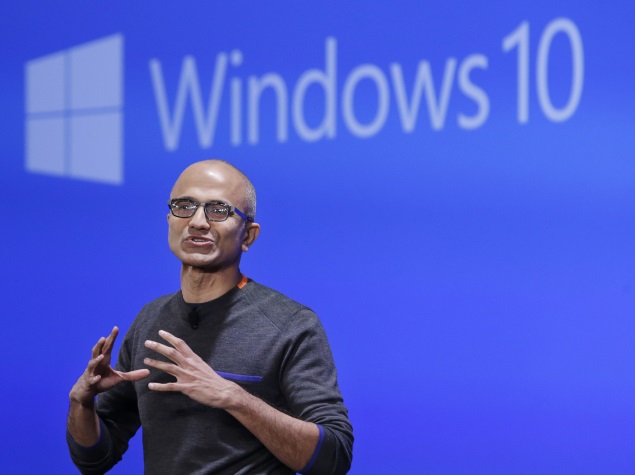- Home
- Laptops
- Laptops Features
- Windows 10 to Weave Microsoft Powered Devices Together
Windows 10 to Weave Microsoft-Powered Devices Together

The US technology titan is also trying to make it more natural to interact with devices, such as conversational-style speaking with the company's virtual assistant Cortana.
(Also see: Microsoft Unveils HoloLens Goggles and Windows Holographic UI)
"The number of devices is just exploding around us," Microsoft's Terry Myerson said during a presentation to press and analysts at the company's headquarters in Redmond, Washington.
"It should be easy to put one device down and pick up another where you left off; technology needs to get out of the way."
Windows 10 is being designed with feedback from millions of "insiders" testing early versions of the operating system, Myerson said.
That feedback and design creates a foundation on which developers can build applications for smartphones, tablets, laptops, desktop computers, and Xbox One video game consoles, he said.
During the first year after the release of Windows 10, the operating system will be available as a free upgrade for computers running prior generation Windows 8.1 or Windows 7 software.
Microsoft said it will also keep Windows 10 upgraded during the lifetime of devices.
Personalized virtual assistant Cortana, and its touted ability to answer questions conversationally, will be now available on personal computers. Cortana made her debut on Windows-powered mobile devices.
Microsoft also unveiled a new Web browser code-named Spartan, which will have Cortana built in and ready to chime in at presumably helpful moments.
Spartan is poised to be the successor to Internet Explorer.
"Project Spartan is a new browsing experience tuned for being mobile and working across this family of devices," said Microsoft's Joe Belfiore.
Catch the latest from the Consumer Electronics Show on Gadgets 360, at our CES 2026 hub.
Related Stories
- Samsung Galaxy Unpacked 2025
- ChatGPT
- Redmi Note 14 Pro+
- iPhone 16
- Apple Vision Pro
- Oneplus 12
- OnePlus Nord CE 3 Lite 5G
- iPhone 13
- Xiaomi 14 Pro
- Oppo Find N3
- Tecno Spark Go (2023)
- Realme V30
- Best Phones Under 25000
- Samsung Galaxy S24 Series
- Cryptocurrency
- iQoo 12
- Samsung Galaxy S24 Ultra
- Giottus
- Samsung Galaxy Z Flip 5
- Apple 'Scary Fast'
- Housefull 5
- GoPro Hero 12 Black Review
- Invincible Season 2
- JioGlass
- HD Ready TV
- Laptop Under 50000
- Smartwatch Under 10000
- Latest Mobile Phones
- Compare Phones
- OPPO Reno 15 Pro Max
- Honor Win RT
- Honor Win
- Xiaomi 17 Ultra Leica Edition
- Xiaomi 17 Ultra
- Huawei Nova 15
- Huawei Nova 15 Pro
- Huawei Nova 15 Ultra
- Asus ProArt P16
- MacBook Pro 14-inch (M5, 2025)
- OPPO Pad Air 5
- Huawei MatePad 11.5 (2026)
- Xiaomi Watch 5
- Huawei Watch 10th Anniversary Edition
- Acerpure Nitro Z Series 100-inch QLED TV
- Samsung 43 Inch LED Ultra HD (4K) Smart TV (UA43UE81AFULXL)
- Asus ROG Ally
- Nintendo Switch Lite
- Haier 1.6 Ton 5 Star Inverter Split AC (HSU19G-MZAID5BN-INV)
- Haier 1.6 Ton 5 Star Inverter Split AC (HSU19G-MZAIM5BN-INV)

















